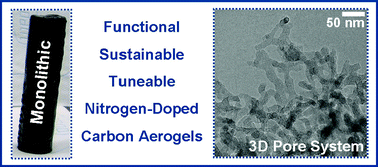Scientists from Germany and Japan have developed a method to synthesize nitrogen-doped carbon aerogels (CA) from sustainable starting materials.
Aerogels are coherent, highly porous solid materials with attractive physical properties such as low density, excellent mass-transfer properties, low thermal conductivity, and low dielectric permittivity. Previous methods to synthesize nitrogen-doped CA have several disadvantages, as the materials are phenol-based with low conductivity and relatively inert, making post-chemical modification challenging.

To read the full article, please click on the link below! This article is free to access until September 6th.
A sustainable synthesis of nitrogen-doped carbon aerogels, Robin J. White, Noriko Yoshizawa, Markus Antonietti and Maria-Magdalena Titirici, Green Chem., 2011, DOI: 10.1039/C1GC15349H










